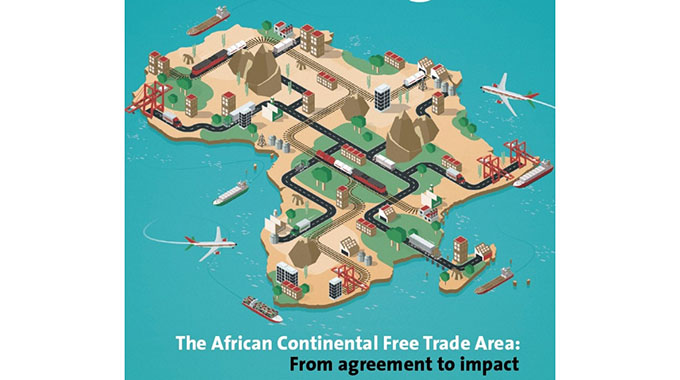Understanding business sustainability
Sustainability in business refers to the practice of operating in a manner that meets the needs of the present without compromising the ability of future generations to meet their own needs.
It involves adopting environmentally, socially and economically responsible practices that minimise harm and maximise benefits to the organisation, its stakeholders and the wider community.
Sustainable businesses prioritise reducing their environmental footprint, promoting social justice and ensuring long-term economic viability.
This approach recognises that business success is deeply connected to the well-being of the planet and its resources, as well as the well-being of people and communities.
By embracing sustainability, businesses can reduce risks, capitalise on opportunities and contribute to a more resilient and thriving world for generations to come.
Sustainability is crucial for ensuring a thriving planet, equitable society and prosperous economy for generations to come. It protects the environment by conserving natural resources, reducing pollution and mitigating climate change.
Sustainability also promotes social responsibility by supporting fair labour practices, local communities and human rights. Furthermore, it drives economic growth by encouraging long-term thinking, reducing waste and fostering innovation.
By adopting sustainable practices, businesses can manage risks, enhance their reputation and stay competitive. Additionally, sustainability ensures compliance with evolving regulatory requirements and supports human health and well-being.
As the world faces global challenges like resource scarcity, climate change, and inequality, sustainability encourages international cooperation and collective action. Ultimately, embracing sustainability is essential for creating a better future for all.
Fostered through conscious practices and policies, environmental sustainability aims to preserve the natural world for future generations.
It involves conserving and efficiently utilising natural resources like water, energy, and land, while minimising waste and pollution.
This approach promotes eco-friendly technologies, renewable energy sources, and sustainable agriculture methods to reduce humanity’s ecological footprint.
By adopting environmentally sustainable practices, we can mitigate climate change, protect biodiversity, and preserve ecosystems.
This includes reducing greenhouse gas emissions, defending against deforestation and promoting sustainable consumption patterns.
Moreover, environmental sustainability encourages responsible waste management, conservation of natural habitats and the protection of endangered species.
By embracing environmental sustainability, we can ensure the long-term health and resilience of our planet, supporting a thriving world for generations to come.
A vital component of overall sustainability, social sustainability focuses on creating a just and equitable society, where all individuals can thrive. It encompasses promoting human rights, fair labour practices, and inclusive communities, ensuring access to quality education, healthcare and economic opportunities.
Social sustainability encourages businesses and organisations to prioritise diversity, equity and inclusion, fostering a culture of respect and empathy.
It also involves supporting vulnerable populations, such as children, women and marginalised groups, and addressing social injustices like poverty, inequality and discrimination. By adopting socially sustainable practices, we can build resilient communities, strengthen social cohesion and promote collective well-being.
This approach recognises that social and environmental sustainability are interconnected and that a healthy planet and prosperous society are mutually dependent. By prioritising social sustainability, we can create a more compassionate, equitable and thriving world for all.
Economic sustainability refers to the responsible management of resources to ensure long-term economic viability and prosperity. It involves adopting business models and practices that balance financial growth with social and environmental considerations.
Economic sustainability aims to create a stable and resilient economy that provides opportunities for employment, innovation and entrepreneurship while minimising waste and pollution.
This approach encourages investments in sustainable infrastructure, research and development and education, leading to increased productivity and competitiveness. By prioritising economic sustainability, businesses and organisations can reduce their exposure to risks associated with climate change, resource depletion, and social unrest, while capitalising on opportunities presented by the transition to a low-carbon economy.
Furthermore, economic sustainability promotes fair trade practices, supports local economies and ensures that economic growth benefits all stakeholders, including shareholders, employees, customers and the broader community. By embracing economic sustainability, we can create a prosperous and inclusive economy that benefits present and future generations.
A sustainable organisation should strive to minimise resource consumption while maximising value creation. Here, resources are defined broadly to be natural or anthropogenic stocks that are required for the creation, use and disposition of a product or service.
Examples of resources include materials, energy, labour, and land. Value is defined as a condition, attributable to a company’s activities, which benefits one or more of the organisation’s stakeholders.
Examples of value creation include increased profitability, reduced pollution, improved nutrition, and liberation of time.
(SPM) Performance sustainability measurement progress
Public discussion about measuring sustainability thus far has focused on what should be measured. For industrial practitioners, this question is not sufficient, since it addresses only one component of a performance measurement process.
Other important issues include how frequently to measure, who should be accountable for measurement and how the results are to be utilised. In other words, sustainability performance measurement should be viewed as an ongoing business process, i.e., a set of logically related tasks or activities undertaken to achieve a defined business outcome.
By understanding the entire performance measurement process, practitioners can identify and use the indicators and metrics that are most appropriate for their business.
SPM process overview
A variety of performance measurement processes have evolved in industry practice. These processes generally consist of a series of steps that can be grouped into three phases: Plan, Implement and Review.
Companies have applied these steps to track a broad range of activities, including environmental management, facility operations and technology development programmes. Based upon recent work sponsored by the Electric Power Research Institute (EPRI), Battelle has codified generally accepted industry practices into the process model shown in Figure 2.
The process involves a three-phase structure of Plan, Implement and Review, which is analogous to the ISO 14031 framework for Environmental Performance Evaluation.
While the general model is universal, the actual sequencing and implementation of these steps will vary from company to company due to their differing business strategies, environmental impacts, and organisational structures.
STEP 1: Develop sustainability policy
The first step in the Plan phase is developing a sustainability policy, which articulates the company’s overall aims and principles of action with respect to its economic, environmental and societal performance.
The goal is to create a policy that both supports the business strategy and addresses the concerns of company stakeholders. The activities of a company affect multiple stakeholders in different ways.
For example, community groups might be concerned about air emissions or other releases from manufacturing plants, while employees have interests ranging from safety to the company’s image and stewardship activities.
Insurers and lenders may be concerned about environmental costs and potential liabilities, while non-governmental organisations and interest groups are concerned with issues such as labour conditions, greenhouse gas releases and the use of renewable energy sources. Finally, shareholders and investors are interested in new technology investments and how sustainability influences creation of economic value for the firm.
Although stakeholders are important, the company retains a great deal of discretion regarding the emphasis of its sustainability initiatives. The company’s overall business strategy should influence how the sustainability policy and the remainder of the SPM process are designed.
For example, a company that has developed a strong brand identity might consider focusing on environmental and social issues that could damage their image. As examples, Nike and Levi-Strauss revamped their product responsibility efforts after receiving negative media coverage related to the activities of major suppliers.
This assessment of the business strategy answers questions such as
How does the company define success?
What are its specific short and long-term business goals?
How can environmental and societal concerns support or hinder efforts to achieve these goals?
How could SPM results help the company achieve its strategic, tactical and operational goals?
Synthesising an understanding of stakeholders concerns with these business strategy issues enables the creation of an effective sustainability policy.
STEP 2: Identify major aspects
During the second step, companies evaluate how their products, services and activities can support (or hinder) progress towards sustainability. This step ensures that the performance measurement process addresses important economic, environmental and societal concerns. As illustrated, the list of potential sustainability aspects for products is quite extensive.
In addition, there are a variety of sustainability aspects that are not associated with specific products or processes, but rather pertain to overall company practices. Examples of such company-wide aspects include management systems, implementation, auditing programmes and community development.
Companies have applied a variety of approaches to perform review and select the aspects that are most important for performance tracking. One recommended approach involves a sequence of three tasks:
- Identify all aspects of sustainability that are potentially important
- Assess or estimate the magnitude of these aspects using available indicators
- Rank the aspects in terms of relative importance.
Completing the first task requires activities such as conducting brainstorming sessions, reviewing previous successes and problems and interviewing stakeholder organisations. Assessing the magnitude of the sustainability aspects identified requires either quantifying them in terms of resource or value metrics, or at least qualitatively rating them on a semantic scale.
Finally, the organisation is left to determine the most significant environmental aspects by assessing their relative importance, which can be accomplished through various group voting techniques.
Having determined which aspects are most significant, decision-makers can then proceed to select the few that merit performance tracking.
STEP 3: Establish objectives
Based upon the company’s sustainability policy and the determination of significant environmental aspects, a set of annual and/or longer-term objectives is established. Objectives arise from the sustainability policy and are quantifiable where practical. Examples include: Eliminating usage of toxic materials. Increasing material utilisation ratios -Improving the ecosystem quality on managed properties
Reducing the costs of waste management activities
Developing inherently clean and safe technologies
Increasing employee satisfaction and well-being
Supporting reduction of poverty in developing countries
As shown by these examples, objectives should address the triple bottom line and should be oriented towards either resource conservation or value creation.
STEP 4: Select indicators and metrics
Once managers have agreed upon the critical objectives, they can proceed to select the performance indicators and accompanying metrics for their sustainability program. The indicators and metrics help to make the sustainability policy actionable by providing specific guidance to managers and decision-makers. They also help to demonstrate a tangible commitment to external stakeholders.
Performance indicators
A sustainability performance indicator (SPI) is defined as a quantifiable attribute of an enterprise’s activities that characterizes the potential contributions of these activities toward the enterprise’s sustainability objectives.
Examples of SPIs include air emissions, stakeholder satisfaction ratings, contributions for conserving habitat, and revenues associated with clean technology applications.
Note that it is important to have a balanced set of both leading and lagging indicators; neither are sufficient on their own. Several criteria can help managers choose the most appropriate set of performance indicators. The following selection guidelines have proven useful in a variety of industries.
- Comprehensive. Does the set of performance indicators address all of the organisation’s major aspects and objectives?
- Controllable. Can the organization, group, manager or employee significantly influence the desired results?
- Cost-Effective. Can the necessary data be obtained from existing sources or otherwise easily collected?
- Manageable. Is the set of indicators limited to the minimal number required to meet the other criteria?
- Meaningful. Will individuals throughout the organisation and external stakeholders easily understand the indicators?
- Robust. Do the indicators address inputs and processes (leading indicators) and outcomes (lagging indicators)?
- Timely. Can measurement occur with sufficient frequency to enable timely, informed decision-making?
These guidelines support successful implementation by avoiding commonly experienced problems. For example, if managers are held accountable for indicators that they cannot significantly influence, resentment or apathy can easily result. Similarly, some personnel evaluation programs have faltered because an unwieldy number of indicators made the program overly complex.
Performance metrics
A performance metric defines a specific means of measuring and tracking a performance indicator. In general, a variety of metrics can be chosen for any given performance indicator. For instance, potential metrics for solid waste include annual volume (tons/year), annual improvement (% reduction), or quantity avoided (tons recycled/year).
Metrics can be classified in several different ways. For example, qualitative metrics are those that rely on semantic ratings based on observation and judgement, while quantitative metrics are those that rely on empirical data.
A second important distinction is between absolute and relative metrics. Absolute metrics are defined with respect to a fixed measurement scale, e.g., “total annual hazardous waste generated.”
Relative metrics are those that are defined with respect to another metric or variable, e.g., “total hazardous waste per unit of energy produced.”
Another approach is to use time-based relative metrics, i.e., those which compute the change in a particular quantitative metric over a given time period; for example, “the percent reduction of total hazardous waste from 1992 to 1993.”
Finally, several companies are striving to use normalised metrics, which measure sustainability performance per unit of production. Normalisation enables comparability over time, but can also introduce anomalies.
For example, a well-performing company might wish to acquire a high-volume business with relatively poor sustainability performance, which would skew the company’s overall performance results.
Similarly, a manufacturing company that reduced a major waste stream from its facility by outsourcing the production to a supplier should not receive credit for that reduction (assuming that the supplier continued to generate the waste stream.)
STEP 5: Determine targets
After the indicators and metrics have been identified, the company is ready to commit to short or long term targets, which establish what level of performance it intends to achieve.
In brief, indicators designate a measurable dimension of performance, metrics provide a means of quantifying the indicators, and targets provide a basis for tracking and assessing improvement.
Companies sometimes choose not to set targets until they have established a baseline performance level against which progress can be measured. A thorough understanding of current capabilities minimises the risk of over-commitment.
However, establishing targets cannot be delayed indefinitely because these targets guide decision-making efforts and support stakeholder communication.
Managers can evaluate their options relative to these targets, and stakeholders can better assess a company’s performance based upon their ability to achieve stated targets.
The challenge faced by operating managers at a mid-size US electric utility demonstrates the necessity of explicit targets.
The company had committed to reduce the number of air opacity exceedances; however, the company had not set a target level of performance.
Without this guidance, the managers took incremental steps to marginally improve compliance but did not significantly alter their established practices because they did not know whether further changes were warranted. Thus, improvement efforts can flounder unless explicit targets are established.
Best practice companies
A review of recognised sustainability leaders shows that at least a few companies are applying the SPM principles and process steps.
Since only a small number of companies have publicly stated a sustainability policy, other companies will find the experiences of these leading companies valuable as they progress on the path towards sustainability.
Company profiles
The Body Shop has expressed its pro-active environmental stance since they began business in 1976.
The Body Shop’s aim is to become a sustainable business, and its widely publicized Environmental Values report in 1995 was the first of its kind. The report, consisting of three independently verified statements on the company’s environmental, animal protection, and social/stakeholder performance, was recognised by an award from UNEP (the United Nations Environmental Program).
BP Amoco is committed making a positive contribution to society. They take environmental precautions and support community development for areas in which they operate.
BP Amoco believes that there is not a trade-off between financial performance and standards of care, but rather believes that the two areas are mutually reinforcing. Environmental issues considered by BP Amoco include climate change, air quality, and renewable energy technologies.
Collins and Aikman Floorcoverings has demonstrated that environmental sustainability can also yield advantages in cost-effectiveness.
They are the only carpet manufacturer in the world reclaiming old carpet and recycling it into new, high-performance carpet.
Collins and Aikman understands the importance of addressing the triple bottom line, and has instituted several programs to improve performance. They have also formed a “sustainability laboratory” comprised of outside experts.
Monsanto has embraced sustainable development as part of its core strategy, and a few years ago spun off its chemical manufacturing operations to focus on life science-based businesses.
To create value for stakeholders, Monsanto is designing products that use fewer raw materials, produce less waste, require less energy, and enable users to be more productive. Moreover, the company hopes to use its product development expertise to create new markets for sustainable products in agriculture and nutrition.
Volvo is currently working towards becoming a world leader in the transportation equipment industry, based on its performance in the areas of safety, environmental care, and quality.
The company intends to gain competitive advantage and contribute to sustainable development through environmental programs that are characterized by a holistic view, continuous improvement, technical development, and resource efficiencies.
In conclusion, sustainability is no longer a nicety, but a necessity for businesses to thrive in today’s world. By embracing environmental, social, and economic sustainability, companies can not only reduce their negative impacts but also capitalize on the opportunities presented by a rapidly changing world.
As consumers, investors, and policymakers increasingly demand responsible practices, businesses that prioritise sustainability will be best positioned to succeed.
Let us work together to create a future where business and sustainability go hand-in-hand, driving prosperity for all while protecting the planet for generations to come.
Dr Keen Mhlanga is an Investment Advisor with high skills in Finance. He is the Executive Chairman of FinKing Financial Advisory. Send your feedback to keenmhlanga@gmail.com , contact him on 0777597526.-ebsinessweekl









